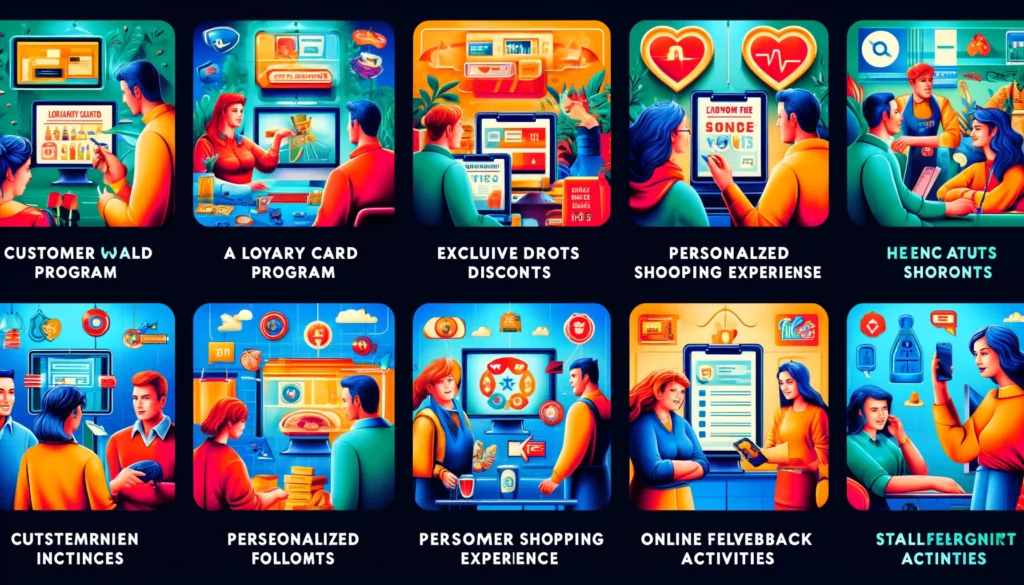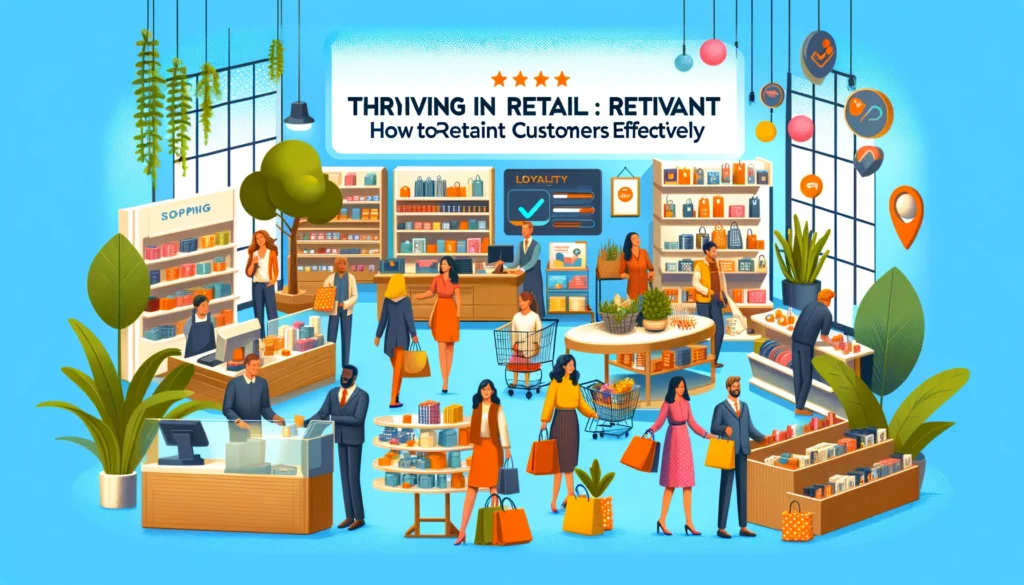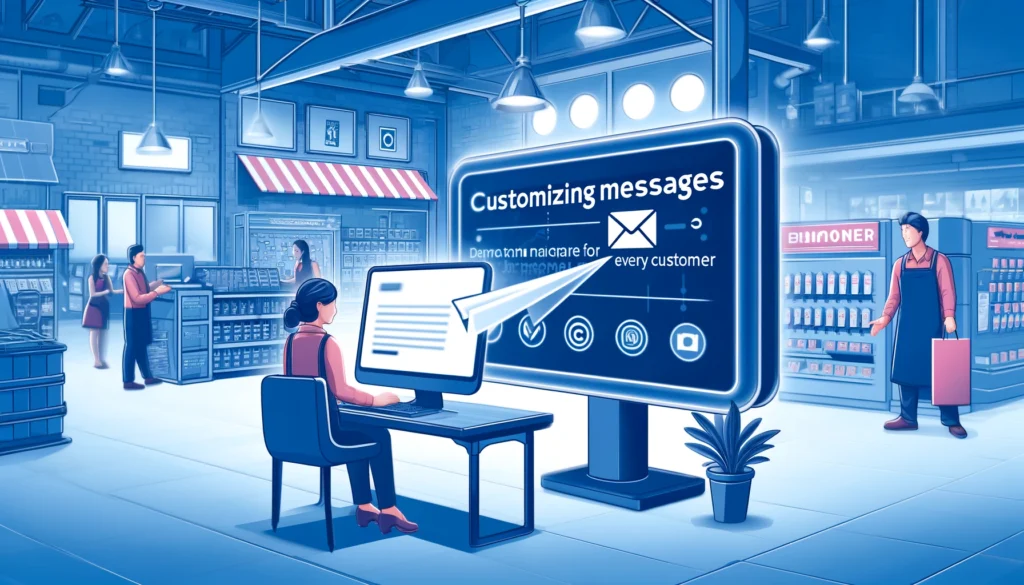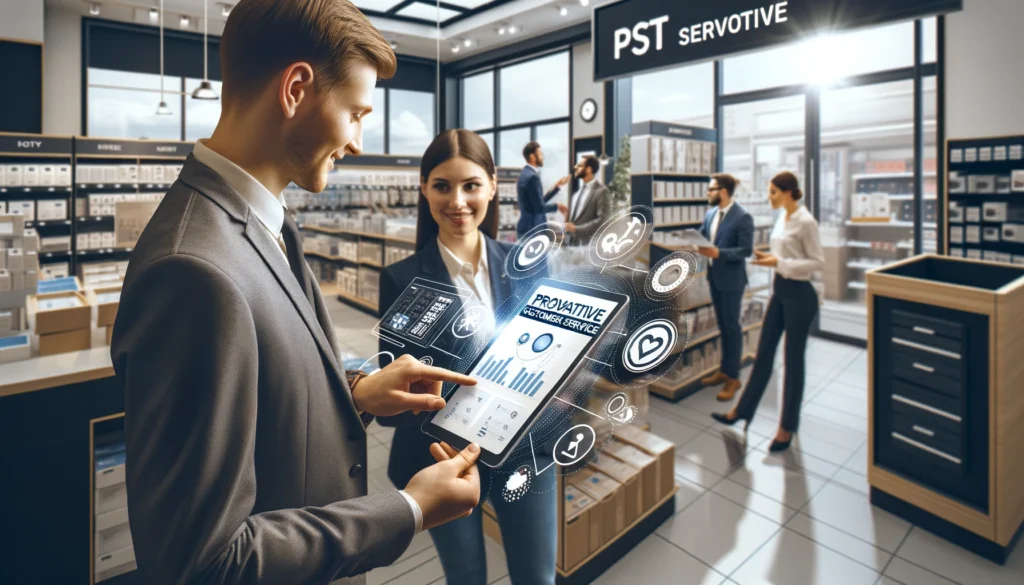Retail establishments spend a lot of time, money, and effort trying to attract new clients. But you need more than that to run a strong, profitable business.
In actuality, these consumer loyalty figures show that 65 percent of a corporation’s revenue originates from repeat business. For this reason, to maintain and grow your relationships with them, gather online reviews and promote brand advocacy, you need a retail retention plan.
What is Retail Customer Retention?
The capacity to draw in and keep a customer base is known as customer retention in the retail industry. A business needs new clients, but it’s equally crucial to keep serving your current clientele. This is why many merchants concentrate the majority of their advertising budget on bringing in new customers. You want clients who come back time and time again, who love and interact with your business, and who recommend you to everyone they know, not just one-time buyers.
Your retention rate provides you with useful information about the state of your company. A high retention rate indicates that your marketing approach is effective, that your goods and services are of a high calibre, that your messaging is reaching the proper audience, and that you are making the most money possible.

Why do retail store owners need to focus on retention?
The 80-20 rule, often known as the Pareto principle, is a formula used in economics and business. The idea is that 80% of outcomes result from 20% of inputs. When you think about it in terms of customers, you’ll notice that around 80% of your sales originate from 20% of them.
For this reason, you ought to monitor your retail retention rate carefully. You can build a strong foundation that will support the growth of your company by concentrating on maintaining ties with your current clientele and seeking out new clients that share characteristics with your most devoted patrons. Here are some more strong arguments for your retail organization to concentrate on customer retention.
- It is expensive to continue attracting new clients
Acquiring a new customer can cost five times as much as retaining an existing customer. And you have a 60%-70% chance of selling to an existing customer, compared to roughly 20% for a new one.
- Retention and loyalty generate word-of-mouth referrals
Your loyal consumers want to recommend your products and services to their friends and family. Word-of-mouth recommendations are extremely effective since your consumers, who have the trust of their friends and family, are recommending your brand.
- Selling to someone interested in your brand is simpler
The majority of customers do not purchase their first visit to a store. In actuality, you should take into account a variety of client touchpoints, including your website, email, social media accounts, point of sale (POS), and more. Customer touchpoints are the various interactions you have with customers from the time they find your store until they make a purchase, as well as the relationships you develop after the transaction.
Salesforce reports that 50% of repeat buyers make their second purchase within 16 days of their first transaction, demonstrating the importance of staying engaged with your existing consumers. When someone has already purchased from your company, maintaining in touch after the sale is the best method to continue engaging with them and encourage repeat business.
- Reduce the expense of marketing
The customer base has become familiar with your offerings. Instead of spending all of your marketing budget on advertisements to attract new clients, invest some cash and time in keeping your present clientele. Because you already have a list of consumers’ contact information that you can use for retargeting, email marketing, and loyalty programs, loyalty marketing tactics are less expensive than advertising.
- Loyal consumers drive sales
An effective customer retention plan yields a higher ROI than other marketing tactics. Increasing client retention rates by only 5% can boost profitability by at least 25% and as much as 95%. When comparing new and current consumers, existing customers spend more money and are more likely to buy new products.

6 Customer Retention Strategies That Can Help You Sell More, Both In-Store and Online
Now that you understand the significance of customer retention, let’s discuss strategies for achieving it. Use some of these tactics to increase sales both in-store and online.
1. Develop a client loyalty and referral program
With so much competition, you want to give customers a reason to return and purchase with you again and again.
The loyalty program
A loyalty program might encourage customers to return for future purchases. Customers typically receive points for each purchase made through these schemes. Customers can use their points to receive free samples, discounts, or free purchases. Because loyalty programs are dependent on how much clients
spend with your company, they increase the average order value.

Referral Program
Customers who refer others to your store receive benefits from you. Rewards are cited by 41% of internet users worldwide as one of the main incentives for promoting their preferred brand online, according to GWI.
Consumers who fall in love with your brand can tell their friends and family about it and receive discounts and other benefits; in turn, this brings in more business, strengthens the reputation of your brand, and increases sales.
2. Stand up for causes
Customers are increasingly doing business with retailers who share their beliefs, and we have the data to prove it. According to GWI, 46% of all internet users worldwide want brands to be environmentally friendly, 44% to be socially responsible, and 28% to support charities.
For example, if you want to be environmentally conscious, you can donate proceeds to NGOs that clean up the environment. You can also use eco-friendly packaging and actively lower your company’s carbon footprint. If you wish to help battle hunger, you may give a portion of your revenues to organizations that provide food to those in need.
3. Create a community
Creating a community of patrons provides them a cause to come back to your business. Attending community events can entice clients to return to your website or business and make more purchases.
Creating a community among your customers strengthens their faith in your brand. You can establish an online review community in addition to your real one.
Online review communities can help you overcome social distancing techniques and connect with clients who might not be near your physical location. Think about setting up a private community group on a social media site like Facebook where your clients may engage with you and one another by asking questions and sharing tales.

4. Be proactive with your customer service
Globally, 35% of consumers think that receiving excellent customer service encourages them to promote their preferred brand online.
Take a proactive approach to customer service to build your customer relationships. Be proactive by soliciting internet reviews from your consumers, admitting any mistakes before your customers discover them, creating material that solves their most often-asked issues, and paying close attention to what your customers say about your business in online reviews.
5. Maintain relationships after the sale
By staying in touch with your clients after every transaction, you can demonstrate your commitment to them. These are some ideas for follow-up messages that might help you build trust with your clients.
Use Push Notifications
Customer relationships begin when a customer checks out. Many businesses developed a funnel to improve the post-purchase experience to accelerate the rate of recurring business. Every touchpoint, from checkout to delivery, is a chance for rediscovery. Numerous firms, including Shopify, Amazon, eBay, and others, provide order progress and delivery tracking updates to your clients’ phones.
Every time clients use the app, they will receive push notifications prompting them to locate recommendations from your store. This means Business is constantly assisting you in making your next sale before a customer’s last order has even arrived.
Send post-purchase emails
Make effective use of your consumers’ email addresses by using email marketing as you get them. This promotes brand loyalty by continuing the conversation after they’ve left your store or online.
One of the main drivers of brand advocacy, according to GWI, is the dissemination of useful information. Globally, 32% of internet users stated they are more inclined to promote their favourite company in online reviews when it is relevant to their interests.
You can use post-purchase emails to give useful information on how to use the things they purchased. Continuing to interact after the sale is also an excellent opportunity to cross-sell—tell customers about other things they might be interested in based on their previous purchases.

6. Send emails after making a purchase
Make effective use of your consumers’ email addresses by using email marketing as you get them. This promotes brand loyalty by continuing the conversation after they’ve left your store or online.
One of the main drivers of brand advocacy, according to GWI, is the dissemination of useful information. Globally, 32% of internet users stated they are more inclined to promote their favourite company online when it is relevant to their interests.
You can use post-purchase emails to give useful information on how to use the things they purchased. Continuing to interact after the sale is also an excellent opportunity to cross-sell—tell customers about other things they might be interested in based on their previous purchases.
7. Customize messages for every customer
Enhance your connection with every consumer by tailoring their purchasing experience. You can sync the customer’s purchase history with your loyalty program as you will have it. In this manner, you may determine which goods are best to suggest to them in your follow-up conversations.
Simple acts of personalization like writing a customer’s name on a clothes store fitting room door or adding a handwritten note to an item you ship can also be considered forms of personalization. To increase customer happiness, spend time getting to know your customers one-on-one and asking them questions.
Conclusion
The secret to maintaining client loyalty will depend on astute business tactics and a high level of customization. Customers look for experiences cater to their requirements. Consequently, companies that can implement these strategies successfully have a higher probability of keeping their clients.
The future success of client retention tactics will be based on the combination of hyper-personalization and innovation. Additionally, because technology is developing at a rapid pace, you will need to change to meet the expectations of your customers.
A pivotal element in this context is the significance of online reviews. These reviews are a powerful tool for businesses to gauge customer satisfaction and identify areas for improvement. They offer a platform for customers to share their experiences, providing invaluable insights that businesses can use to refine their offerings. Moreover, prospective customers often rely on these internet reviews to make informed decisions, making them a critical component in the decision-making process. Therefore, monitoring and managing online reviews is essential for businesses aiming to enhance customer satisfaction and loyalty.







